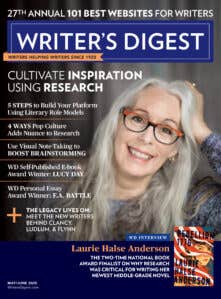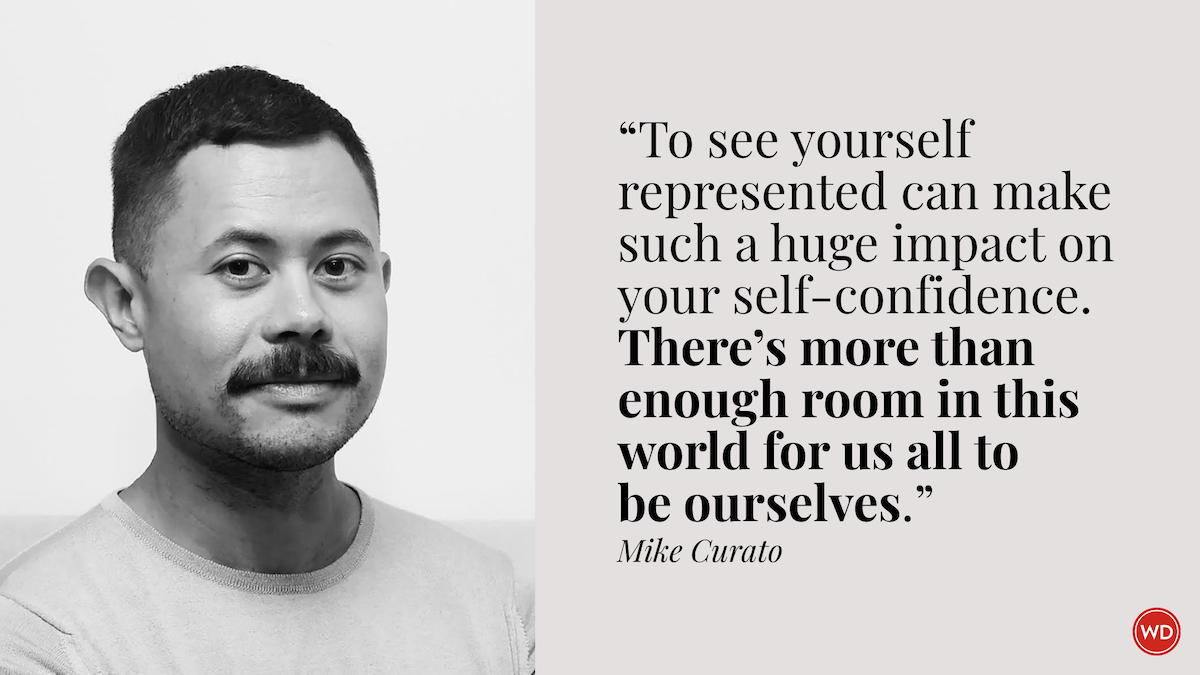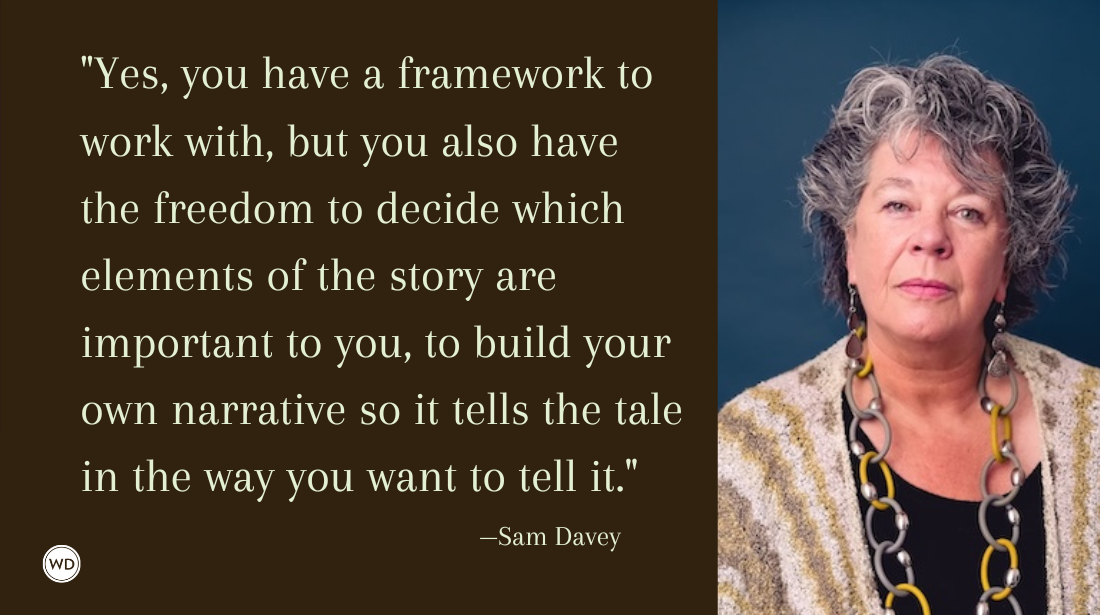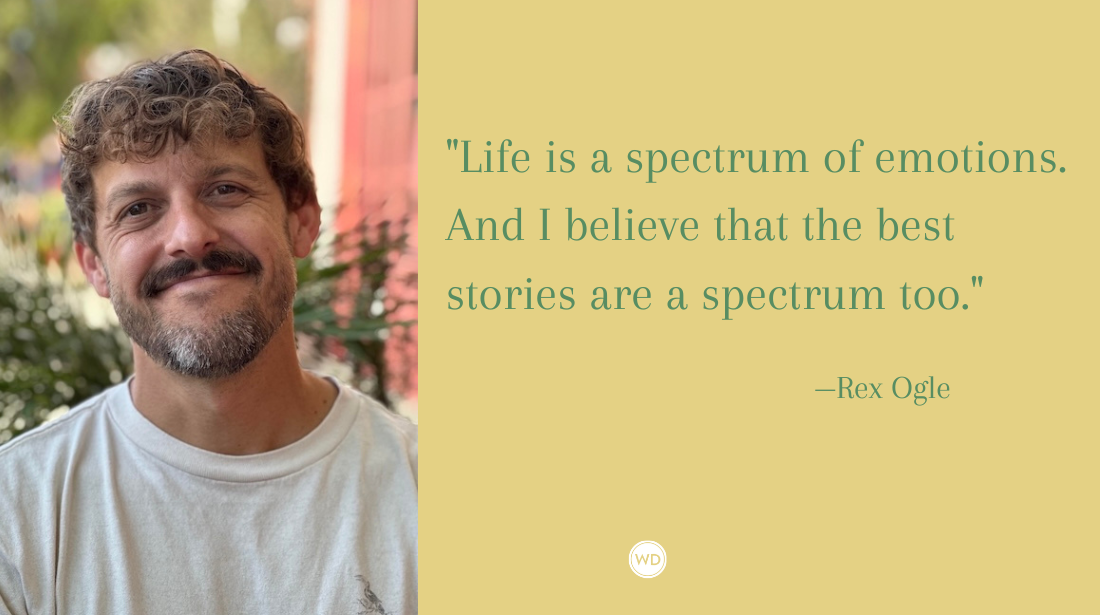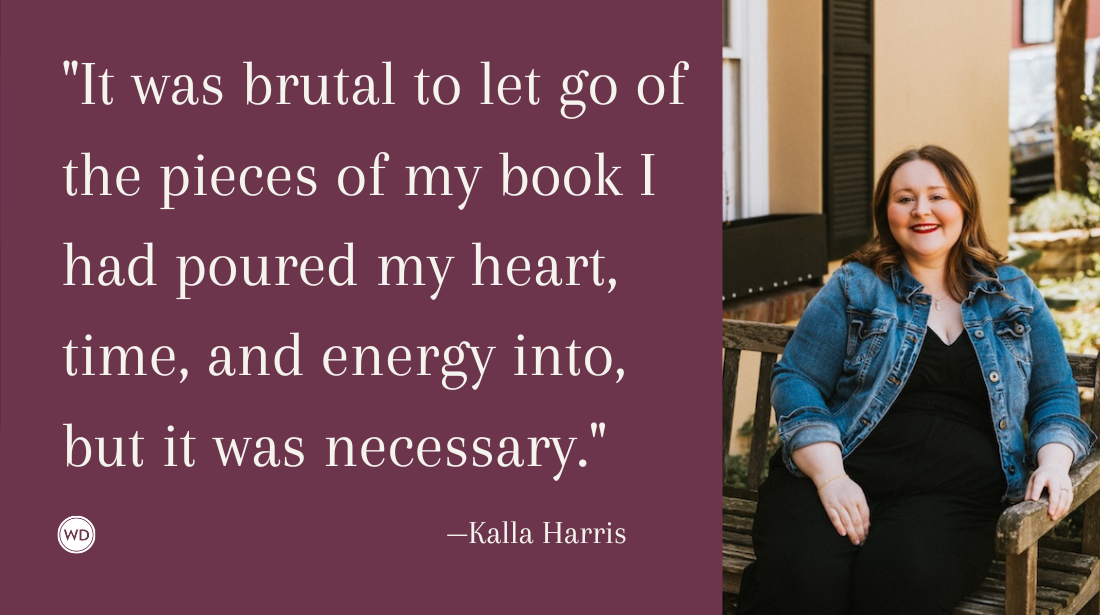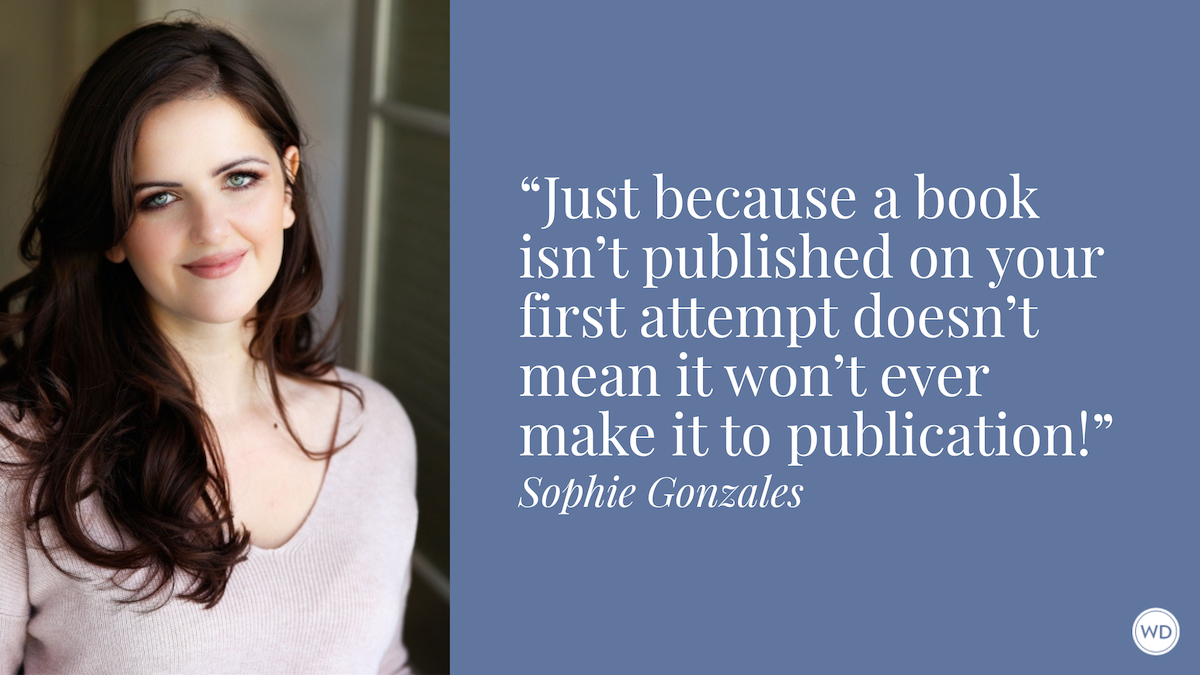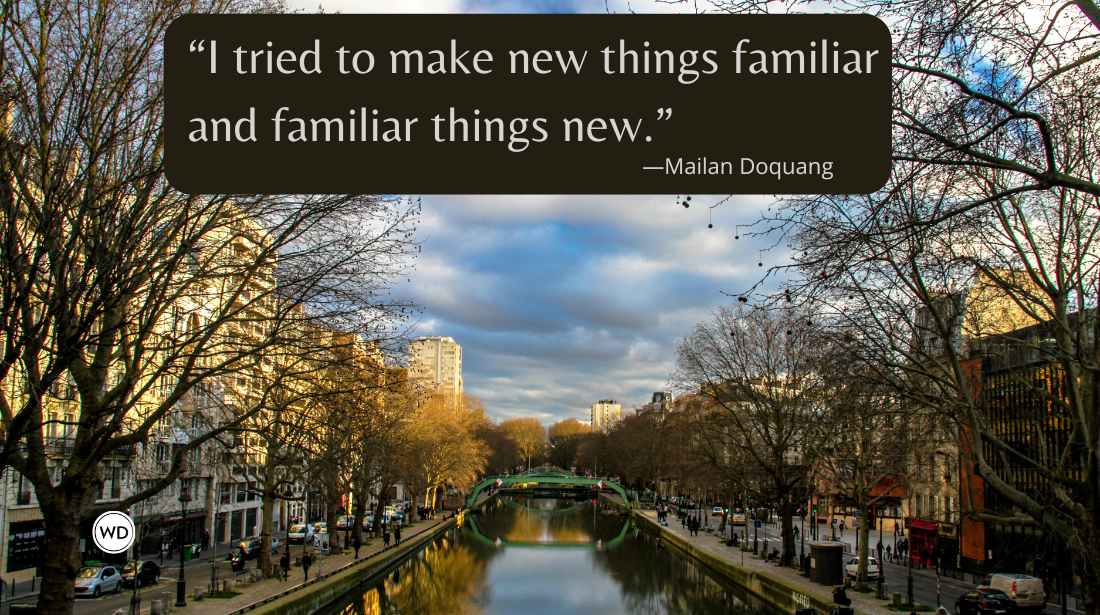5 Ways to Make Your Historical Fiction Ring True
From doing research to translating the past, author C. E. McGill shares five ways to make your historical fiction ring true.
When I began to write my debut novel, Our Hideous Progeny—a spin-off of Frankenstein, in which Victor Frankenstein’s paleontologist great-niece rediscovers his notes and decides to bring one of her own specimens of study to life—I knew that I would have a lot of research ahead of me.
I was aware that I was writing fiction, of course, not a textbook; but even speculative fiction is almost always grounded in a certain level of reality, just enough to allow readers to suspend their disbelief. My hope, then, was to make sure that Mary, and all the historical details of her life as a Victorian woman struggling to make her name in science, rang as true as possible.
The prospect of writing historical fiction can be incredibly daunting—particularly if one is starting from scratch with little background knowledge in the area, as was the case for me before I started writing Our Hideous Progeny. Here are five things that I learned throughout the process, and that I hope will help you make your own historical writing feel smooth and authentic.
1. Do your research.
This is the first and most vital step in recreating any kind of historical setting—and also the one which tends to drive many people away from the mere thought of writing historical fiction!
Research can be intimidating, especially if you’ve never had any formal training in it. The best place to start, I find, is often—Shock! Horror!—Wikipedia. High school history teachers everywhere may denounce it, but starting with a Wikipedia-dive is a tried-and-tested technique recommended by many of my college professors. Actually citing it may be a terrible idea, to be sure, but it’s a great way to get a quick surface-level overview of your time period, and the Bibliography, References, and Further Reading sections are a fantastic place to find more in-depth and rigorous sources to read.
The other thing you’ll want to do ASAP is start taking notes. These can be in a physical notebook (though I don’t really recommend it, unless you love working on paper; digital notes are much more easily searchable), in one long text document, or in an organizational app. As you’re reading, make notes of useful info and where you found it; anything you realize you need to know more about, make into a subject heading to fill in later. Everything you read, scroll to the bottom/flip to the back and look at the sources. If there are no sources listed, it may not be the most reliable information; but if there are sources, it’s worth writing down the title in your notes to check out later.
But what’s next, after you’ve gained a brief overview and established what you don’t know? It’s time to move from the popular history to the nitty-gritty academic material. Even now, in the digital age, the best place for historical research is still likely going to be your local university library. When you’re looking for a French-language dictionary of roads in 18th-century Paris that’s been out of print since 1983, every copy of which costs a fortune on AbeBooks, a university library is your friend.
If you’re a not a student or university faculty, if can be challenging to get lending access to these kinds of places, but a Guest Membership or becoming a Friend of the Library will usually get you borrowing privileges for roughly 50 dollars a year—which is well worth the money. And, of course, you can never go wrong asking the experts; many historians and researchers will be more than willing to point you in the direction of good books to read, or act as paid consultants or beta readers for your manuscript.
2. Immerse yourself in the environment.
Ideally, this step involves taking a research trip: visiting landmarks and locations that appear in your novel, drinking in the atmosphere, perhaps even visiting a living museum or historical reenactment. Such things cost money, however, and—especially if your setting is particularly long ago—visiting the location of your story now can only do so much to help you understand what it was like to actually live in the area day-to-day.
A more accessible way of immersing yourself in the historical environment of your novel is by doing a kind of “literature review.” In academia, this refers to the stage of writing wherein you familiarize yourself with the existing works published in your field. For Our Hideous Progeny, I read works written in 19th-century Britain, and surrounded myself with books and films set as close to my own setting of the 1850s as I could find—this allowed me to get a sense not only of the mannerisms and cadence of speech of the Victorian period, but also of the ways in which modern writers tend to adapt this style. (Most readers nowadays enjoy slightly less florid prose than was common in the 19th century, but write too plainly and it simply doesn’t feel Victorian enough.) You don’t have to be as exhaustive here with your “literature review” as a professional historian, of course, but it helps to get yourself accustomed to the vocabulary of the era and the ways in which other writers have managed to capture that historical atmosphere.
Unfortunately, for some historical settings—particularly those outside of the U.S. and Europe, whose histories have long been ignored or misrepresented—existing examples of historical fiction in your area may be sparse. In this case, you may in fact have to act as a historian yourself, wading through the biases of colonialism and historical revisionism in order to pick out the truth. Which brings us to:
3. Learn to look past bias and assumptions.
The problem with immersing yourself in and passively learning from existing historical depictions of your time period, of course, is that many of them are rife with inaccuracies. This isn’t to say that books written by academics can’t be inaccurate—historians are human too, and are just as capable of being wrong or prejudiced as the rest of us—but historical fiction does have a tendency to perpetuate long-disproven myths. Some of these (e.g., “All Victorians were prudes, and fainted at the sight of an ankle!”) are simply annoying, but some (e.g., “People of color didn’t exist in Victorian Britain!”) are outright harmful.
In general, history is usually more complicated and nuanced than most people tend to think. Occasionally, widely held assumptions may hold a grain of truth behind them. For example, the Victorian era was indeed a period of rapid societal change and high anxiety over social behaviors, which resulted in the publication of a huge amount of literature on etiquette and morality.
At the same time, no one would waste effort writing an angry column on proper dress for young women if they had never encountered any scandalous young women breaking these rules; not to mention, any illiterate women of the working classes wouldn’t be able to read such an article at all!
It’s this kind of looking between the lines that can often uncover fascinating insights into the lives of people of different classes, races, genders, sexualities, religions, and abilities hidden behind our prevailing notion of what constitutes “history.” Everything you read, ask yourself: Who’s writing this? Why are they writing it? And who’s missing from the page?
4. Choose how much you translate the past.
All historical fiction involves some level of translation. If you’re writing something in English set in, say, Renaissance Italy, this may seem like an obvious statement; but how do you choose how much to translate? Will you say Firenze or Florence? Will you keep in certain Italian phrases and greetings, or not? And what style of English do your characters use on the page, given that “old-fashioned” English is technically just as inaccurate a choice as modern English?
Even though the Victorians did speak English, albeit in quite a different manner than we do today, I was faced with similar questions in writing Our Hideous Progeny. When Mary encounters a daguerreotype, should I stop and explain to readers that this is an early form of photography, or let them figure it out from context? Should I have Mary and Maisie start out calling each other “Miss,” as would have been more historically appropriate, and risk the audience feeling that this puts them at a distance—or simply have Maisie be unusually forward, and suggest that they call each other by their first names from the beginning? (In both cases, I chose the latter; I trust my readers to have the intelligence to figure out a few unfamiliar words, but feelings are far more deeply ingrained.)
It's a fine balance between making a book “accessible” to modern, non-historian readers, while also making sure that it feels firmly grounded in its historical setting. One of my writing professors once advised that when writing fantasy or science fiction, a 70/30 balance—70 percent familiar, 30 percent unfamiliar—will give your readers enough interesting new concepts and vocabulary to chew on without overwhelming them, and I think that a similar balance works well with historical fiction, too.
5. … And remember: People have always been people.
It can be easy sometimes, when researching the past, to get caught up in the differences. The unappealing “cures” for diseases, the unfamiliar fashions, beliefs, or philosophies so strange that you struggle to wrap your head around how someone might even come up with such an idea. But the one thing I enjoy most about history—and that is vital to remember while writing historical fiction—is that people have always been people.
We’ve always sung, and painted, and carved toys for our children; we’ve always come together in families and communities, and become convinced that ours is better than anyone else’s; we’ve always had moments of stupidity and selfishness and anger, but also moments of inconceivable kindness and generosity. And recognizing this kind of human connection, our commonality across the eras, is (I think) what makes the best historical fiction.
Other Research Tips & Tricks:
- If the period you’re researching is fairly recent, there’s a good chance that you can find many contemporary documents – e.g., maps, newspapers, out-of-copyright books – online for free. Sites like The Internet Archive, Project Gutenberg, Old Maps Online, and other archives host huge databases of old historical records and books.
- Searching your research keywords on Google Scholar can help you find relevant academic articles. A huge number of academic articles can also be accessed through JSTOR, who allow you to read up to 100 articles a month when you register for a free account, and through various open-access networks like Humanities Commons.
- Found the perfect source, but the link is dead? Paste the URL it into the Wayback Machine to see if they have a backed-up version.
- If an academic paper is paywalled, or access is restricted to an institution of which you’re not a member, try sending the author a direct (and polite) email; many researchers will be more than happy to send you a copy.
- Still can’t find access to a source you need? Ask a librarian or archivist; they’re experts at finding things, and, in my experience, will happily go above and beyond to help you find the information you need.
C. E. McGill is a writer of speculative and historical fiction, born in Scotland and raised in North Carolina. McGill is the author of the novel Our Hideous Progeny, and their short fiction has appeared in Fantasy Magazine and Strange Constellations. You can find more of them on Twitter or Instagram.


